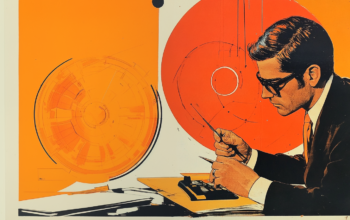How to Ask a Question
A friend recently told me about an experience he had at a job interview. He had been bombing it through the first portion of the hour, fumbling his answers, and generally not proving his value as a candidate.
Then came the time for him to ask questions. Everything turned around. The discussion became engaging and penetrating. And what started out as a complete disaster ended up being one of his best interviews.
The manager told him days later that she had basically written him off after ten minutes, but the questions he asked at the end of the interview showed her that he did know what he was talking about and was a great fit after all. He ended up getting the job.
Everyone knows how important it is to be a good communicator. And, in order to be a good communicator, you have to be able to ask good questions.
As legendary investor Ray Dalio put it, “Smart people are the ones who ask the most thoughtful questions, as opposed to thinking they have all the answers.”
It makes sense. Questions are essential to keeping conversations going, connecting with others, and framing problems. If you’ve recently been in a meeting, interview, or date, you have probably sensed this in action: The ones we want to listen to and engage with are not the ones with all the answers; they’re the inquisitive ones asking great questions.
A lost art
But good questions are rare. A recent study shows that the primary complaint after one-on-one conversations such as an interview or first date is that people didn’t ask enough questions.
More commonly, a question gets asked, but it comes out awkward and the result is anything but good conversation. Who doesn’t recall a time when asking a question actually put an end to the conversation rather than keep it going?
So, if good questions are so important, why are they so few and far between?
To a large degree, asking good questions, like all good conversation, takes skill. And, in a time of sound bites and hostile Facebook debates, it’s a skill that we’ve lost. Our question-asking muscles have atrophied in our social abyss.
It doesn’t have to be that way. It is possible to overcome these cultural obstacles and return to a more engaging and productive mode of asking questions. To that end, I offer three keys to a good question.
1. Come from Curious
It might not seem that way, but a question can be a very vulnerable thing—for both asker and answerer. Asking a question, by design, means you don’t know something. Not wanting to look ignorant, we might hold off asking questions even if there’s something we really want to know.
We all remember the dictum, “There’s no such thing as a stupid question.” That might be true, but there are those who treat all questions as dumb because they see it as a chance to gain a sense of superiority over the oh-so ignorant question-askers. Encounter enough of these folks throughout their formative years, whether it’s in family or friends or teachers, and you will naturally shy away from asking questions at all.
By the same token, many people use questions solely to pin others down rhetorically, and so there is a negative connotation to the exercise, whether or not the question-asker means ill. You’ve probably heard the lawyer’s saw, “Don’t ask a question that you don’t know the answer to.” The idea is that questions are for trapping your foe—the witness, the defendant. It’s a sign of our cynical times that it applies to everyone in every situation these days. Well, it’s only natural that people have grown skeptical of questions as a result even in non-competitive situations.
Time was when a question was asked in order to gain information—no tricks, no rhetoric, just good, old-fashioned information gathering. So, the first key to better questions is to come from curious and avoid the gotchas, whether you’re asking the question or answering it.
2. Provide a Concise Set-up
One of the more common rules to an audience Q&A is “Actually ask a question” also known as “No monologuing”.
If you’ve been at a conference or talk recently, you know why. After the main presentation is done, they move to Q&A and there is invariably someone who gets to the microphone and unloads a presentation of his own. It usually goes on until the presenter finally asks, “Is there a question?” It’s typically a bad one if there is one at all.
Yeah, don’t do that.
Of course, a set up to the question can be very helpful. But keep the set-up minimal. One sentence, maybe two at most, but that’s it.
My friend had a wonderful example of a concise set-up and question from his interview. In order to get to know the hiring manager a little, he found out that she had just taken the Myers-Briggs personality type test with her daughter and they got the same results.
After a bit more conversation, my friend delivered a great set-up and follow-up question: “From what I’ve gathered, the test is very accurate in determining what personality would be a good fit for a particular job. Based on what you know, what type would best fit in this role?”
Now, my friend could have spouted off all he knew about personality psychology and how he was a great fit for the job. But instead he gave a brief set-up and let his interlocutor work through the idea with him—a perfect way to engage with a question.
3. Frame It as a Puzzle
One of the notable pieces of advice that legendary self-help coach Dale Carnegie gave was to “Ask questions that other persons will enjoy answering.”
How do we do that?
Carnegie’s assumption is that people enjoy talking about themselves, so he recommends asking about their lives, their families, their work.
But that can result in small talk and, if we’re being honest, boring conversation. It also might be intrusive or burdensome if someone doesn’t want to share or doesn’t have a ready answer. Is there a way to engage with others that doesn’t necessarily result in throw-away chit-chat?
The key is to frame the question as a game or puzzle that you know the answerer has the solution for. Everyone loves solving puzzles, especially if it’s related to their life, family, or work. Suddenly, you’re no longer being interrogated; you’re playing a game.
Parents might have instinctively arrived at this approach after struggling to find out about their kids’ day. Instead of the typical “How was your day?” a parent might ask “What was the best class of the day?” or “What was the hardest thing you did today?”. The child is accessing the same information, but in a more meaningful and enjoyable way.
Similarly, cocktail conversation gurus suggest fun ice-breakers in which you present a situation that requires a choice and then ask for guidance. For example, “My neighbor just bought two dogs and is looking for ‘80s or ‘90s pop duo names.” Who doesn’t want to come up with a few fun ones? “Milli and Vanilli”, “Hall and Oates”, “Kid ‘n’ Play”.
With puzzles and games, everyone can have an answer, and everyone enjoys coming up with one. Instead of stumping them, have them rank things, match, compare, order, classify—have them solve a puzzle, and everyone will be engaged.
Conclusion
Charles Kettering is famous for saying, “A problem well-stated is a problem half solved.” So too is a question well stated half-answered. There is no doubt that question asking has fallen on hard times lately. But a revivification is in order. Perhaps, with these keys we will see better questions and better conversation sooner than later.




